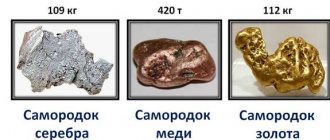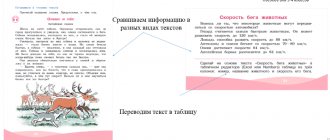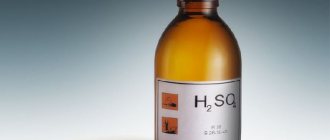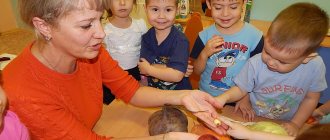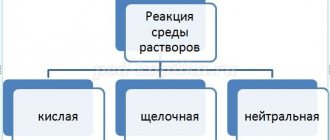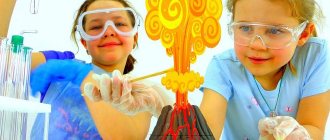Project activities in chemistry lessons in 10th grade
Project activities in chemistry lessons in 10th grade
During their time at school, children should not only gain knowledge, but also develop their abilities to the maximum. The formation of abilities is impossible without the active, interested activities of students. As a teacher, I am sure that any one method does not make it possible to use the entire range of students’ abilities. But, in my opinion, it is the research method, like no other, that makes it possible to turn a child into an active subject of joint activity. Remembering the rule: “There are no untalented people, but there are those who are busy with other things,” the use of the research method makes it possible not only for successful students, but also for weak students to use their strengths. Confucius also said: I hear and forget,
I see and I remember
I do it and I understand.”
Research activity is an independent activity, but the teacher can control the process of manifestation and overcoming difficulties, predict their occurrence, and, therefore, activate ideological positions in the educational process.
To explore means to see what everyone has seen, but to think what no one has thought. The project method is based on the development of students’ cognitive skills, the ability to independently construct their knowledge and navigate the information space, and the development of creative thinking. The student becomes an active, interested, equal participant in learning. He experiences a departure from standard thinking and stereotypes of action, which allows him to develop a desire to learn.
Chemistry is one of the complex sciences. Studying chemistry at school helps shape students' worldviews. However, in the context of a reduction in the time allocated to studying chemistry (grades 8-9 by 2 times, 10-11 by 4 times) while maintaining the volume of its content, it reduces students’ interest in the subject.
The project method is always focused on students’ independent work, but this method is combined with a group approach to learning. I introduce students to the rules and fundamentals of project activities, and the requirements for projects:
— some problem must be solved in the project;
— research work is carried out;
— the project is completed independently by students;
- the teacher plays the role of a consultant;
— the results of the project must have practical significance;
— at the end of the project it is necessary to analyze what worked and what did not.
Before starting work on the project, students receive instructions:
1) project requirements,
2) methodological recommendations, memos - how to properly design a project,
3) scale of project evaluation points.
First, I introduce the guys to projects from past years.
The project work system can be represented by two approaches:
- Connection of the project with educational topics (in class).
- The use of project activities in extracurricular activities (extracurricular activities).
Structure of projects implemented in class
To organize project activities, two types of lesson activities are used:
1. A lesson that consists entirely of working on a project. The form of such a lesson depends on the type of project (For example: a chemistry lesson in the 10th grade on the topic “Alcohols”; in the 9th grade on the topic “Metals”, “Properties of sulfuric acid”). A high degree of student independence is expected. Updated knowledge is consolidated, deepened, and expanded in the process of working on the project.
I announce the topic of the lesson, formulate goals and objectives. I determine the place of the topic in the chemistry course (in accordance with the program). I focus on the relationship between previously studied material and a new topic. I explain the stages of the students’ upcoming work, provide instructions, and indicate the form for recording and presenting the studied material. I explain the form for evaluating the work of groups. Stage 1 Didactic task: organizing activities in groups, immersion in the project. Activities of the teacher: Groups are given instructional cards - tasks and the necessary additional material (reference books, reagents). I provide the necessary instruction for each group. Students' activities: Receive assignments - instructions, get acquainted with their content, comprehend, clarify in the group or with the teacher. Distribute roles in groups (if required). They are planning work. Stage 2 Didactic task: organizing the search for a solution. Activities of the teacher: I do not participate, but if necessary I advise students. I provide differentiated assistance. I unobtrusively monitor the work of project teams. Student activities: work in groups (each in accordance with his role and together). Consult if necessary. Think over the form of presentation of your mini-project. Method: problematic. Stage 3 Didactic task: design of mini-projects. Activities of the teacher: I organize the activities of students to reproduce new knowledge; I organize mental activity to apply the acquired knowledge. Student activities: prepare a presentation: draw up supporting diagrams, discuss the text of the speech. Stage 4 Didactic task: design of mini-projects. Activities of the teacher: I distribute assessment sheets to groups. I organize presentations by project groups. I encourage students from other groups to participate in the discussion of issues. I ask questions. I correct or give the answer myself if students have difficulty. Let me explain. Student activities: Present their activities. Answer questions. Listen to the speakers, supplement, correct if necessary. Ask questions to the speakers. REFLECTION OF OWN ACTIVITY Activities of the teacher: I generalize and summarize the results obtained. I evaluate the activities of the groups. I suggest that students evaluate the work of the groups (including evaluating the work of their group). I'm collecting score sheets. I will make a brief summary on the topic. I answer students' questions. Student activities: Analyze and evaluate their own work and the work of other groups. Prepare and submit evaluation sheets. Listen to the teacher’s message and ask questions if necessary.
2. A lesson in which projects completed by individual students or groups of students outside of class time can be used. During these lessons, students present their project. Presentation is an important skill that develops speech, associative thinking, and reflection. (Chemistry project for the lesson “Carbon” on the topic “Diamonds”, for the lesson “Alkanes” project “Application of Alkanes”)
To involve all students in the class, it is necessary to assign responsibility for each item of the topic (1-3 students per group). The teacher announces the topic of the lesson in advance and gives each group an individual task, helps them select the necessary literature, prepare diagrams, tables, presentations and experiments.
Individual tasks for students when studying a chemical element or substance
1. Historical background (in grades 8-9, “who discovered?”, “when did he discover?”, “where did the name come from?” are considered; in grades 10-11, discoveries are considered in connection with the social situation of that time);
2. Being in nature:
3. Physical properties:
4. The structure of the atom (if an element is being studied), molecules (if a substance is being studied);
5. Finding in the general classification of elements or substances. Nomenclature. Isomerism (if organic substance);
6. Chemical properties (with demonstration of basic properties):
Rules for storage and handling of the substance.
7. Application by industry: industry, medicine, transport, construction, agriculture, everyday life.
8. Receipt (with demonstration of experiments):
9. Physiological properties of the element or its compounds:
10. Local history material (diagrams, maps).
The message of each student or group of substances is timed and accompanied by the display of experiments, slides, diagrams, tables, video clips, etc. The form of such lessons can be different: lesson-conference, lesson-debate, lesson-travel, lesson-game.
The project method allows you to achieve significant results in learning because involves a refusal to memorize material; the development of a creative approach to obtaining information creates the preconditions for developing deep knowledge and practical problem-solving skills.
To implement the project method in the educational process, you can take any chemistry course program as a basis. I am working on the chemistry course program by O.S. Gabrielyan.
Results of application of project activities.
Analyzing the experience of organizing project activities, we can draw the following conclusions:
- work stimulates internal cognitive motivation and helps to increase interest in the lesson (every student is busy)
- lessons are more lively,
— every year students choose chemistry to take the exam (despite the fact that in our school it is taught at a basic level, and the State Examination and Unified State Examination are taken at a specialized level)
- this is an incentive to get a good grade, gain good knowledge, and see the result of the work done.
Students completing projects develop project skills: planning, search skills, communication skills, presentation skills.
Thus, project activities contribute to the formation of a new type of student who has a set of skills and abilities for independent work, ready for cooperation and interaction, endowed with experience in self-education.
In conclusion, I would like to quote the words of the Irish philosopher, esthete, writer and poet Oscar Wilde: “I cannot control the direction of the wind. But I can always set the sails in such a way as to achieve my goal."
Chemistry lesson in 10th grade
Lesson topic: “Alcohols.” The leading idea of the lesson: updating knowledge and everyday ideas on the problem. Formation and development of key competencies (information and problem-solving competence) as the basis for the quality of education. The main didactic goal of the lesson: creating conditions for solving educational problems, forming systemic knowledge, developing students’ learning motivation. Objectives of the lesson: 1. To stimulate in high school students the ability to identify a problem, set goals, identify problems and find ways to solve them, using creativity and elements of research activity. 2. Create a stimulating and motivating problem situation in the lesson as a necessary condition for the development of students’ logical thinking using methods of comparison, analysis, generalization and specification. 3. Update students’ existing knowledge on the topic. 4. Based on interdisciplinary connections between chemistry, biology, and ecology, introduce students to alcohols, their composition, structure, physical properties, and physiological effects on the body. 5. To develop the independence and practical activity of schoolchildren, the skills to competently express their point of view and defend it with evidence. 6. Develop motivation for studying the subject by referring to the life experience of schoolchildren and revealing the practical significance of the material. Leading educational problem (EP) of the topic: the relationship between the composition, properties, production and use of alcohols. The main educational problem of the lesson: Review of the topic: “Alcohols.” Training facilities and equipment:
- instruction cards with tasks;
- reference books “Physical properties of organic substances”;
- samples of organic alcohols;
- test tubes;
- flask with water,
- score sheets.
In preparation for the lesson, 6 groups of students are formed. The role of the teacher is a consultant, an expert. Method: project method, problem-based learning Form of work : group Lesson duration : 45 minutes Lesson stages: I. ORGANIZATIONAL POINT II. ACTUALIZATION OF KNOWLEDGE Didactic task: preparing students for work in the lesson, organizing schoolchildren’s actions aimed at solving problems and achieving lesson goals. Updating knowledge on the topic. Activities of the teacher: I announce the topic of the lesson, formulate goals and objectives. I determine the place of the topic in the organic chemistry course (in accordance with the program). I focus on the relationship between previously studied material and a new topic. I explain the stages of the students’ upcoming work, provide instructions, and indicate the form for recording and presenting the studied material. I explain the form for evaluating the work of groups. Student activities: Accept, clarify goals and objectives. Working with the program. They comprehend and specify the stages of work. Please clarify in case of misunderstanding. Method: reproductive, heuristic. Form of organization of activity: frontal, individual. Indicator of the results of solving the problem: students’ attention and activity when answering the questions posed, the stages of work are defined. III. MAIN ACTION Stage 1 Didactic task: organizing activities in groups, immersion in the project. Activities of the teacher: Groups are given instructional cards - tasks and the necessary additional material (reference books, reagents). I provide the necessary instructions for each group separately. Students' activities: Receive assignments - instructions, get acquainted with their content, comprehend them, clarify them with the group or with the teacher. Distribute roles in groups (theorists, analysts, designers, speakers). They are planning work. Method: problematic. Form of organization of activity: group. Indicator of the result of solving the problem: the emotional state of schoolchildren, answers to questions, active involvement in work. Stage 2 Didactic task: organizing the search for a solution. Activities of the teacher: I do not participate, but if necessary I advise students. I provide differentiated assistance. I unobtrusively monitor the work of project teams. Student activities: Actively work in groups (each in accordance with his role and together). Consult if necessary. Think over the form of presentation of your mini-project. Method: problematic. Form of organization of activity: group. Indicator of the results of solving the problem: notes in notebooks, active learning activities. Stage 3 Didactic task: design of mini-projects. Activities of the teacher: organizes the activities of students to reproduce new knowledge; organizes mental activity to apply the acquired knowledge. Student activities: prepare a presentation: draw up supporting diagrams, discuss the text of the speech. Method: heuristic. Form of organization of activity: group. Indicator of the results of solving the problem: ready for presentation. Stage 4 Didactic task: design of mini-projects. Activities of the teacher: I distribute assessment sheets to groups. I organize presentations by project groups. I encourage students from other groups to participate in the discussion of issues. I ask questions. I correct or give the answer myself if students have difficulty. Let me explain. Student activities: Present their activities. Answer questions. Listen to the speakers, supplement, correct if necessary. Ask questions to the speakers. Method: heuristic. Form of organization of activity: group. Indicator of the results of solving the problem: presented their presentations. IV. REFLECTION OF OWN ACTIVITIES Didactic task: mobilizing students for reflection. Activities of the teacher: I generalize and summarize the results obtained. I evaluate the activities of the groups. I suggest that students evaluate the work of the groups (including evaluating the work of their group). I'm collecting score sheets. I will make a brief summary on the topic. I answer students' questions. Student activity: Listen to the expert’s assessment. Analyze and evaluate their work and the work of other groups. Prepare and submit evaluation sheets. Listen to the teacher’s message and ask questions if necessary. Method: heuristic. Form of organization of activity: individual, group. Indicator of the results of solving the problem: notes in notebooks, comments on speeches. V. Homework (according to the textbook) Students after studying the topic should know/understand:
- concepts of alcohols, their composition, structure;
- physical properties of alcohols;
- physiological effect of alcohols on the body.
Be able to:
- characterize the composition of alcohols;
- express judgments on the issues being studied;
- give formulas of substances;
- find ways to solve problem situations;
- justify your decision adequately to the problem posed;
- reflect on your activities.
INSTRUCTION CARD No. 1 Alcohols: definition, classification, homologous series
- Write the general formula for alcohols. Define the concept of “alcohols”.
- Write the structural formulas of the simplest alcohol and its closest homologue. Select a functional group.
- Write the structural formula of the product of ethylene oxidation with potassium permanganate in an acidic medium. What class of organic compounds does this substance belong to? Write the structural formula of its closest homologue.
- Write the structural formula of one of the products that is formed as a result of the hydrolysis of fats. Write the structural formula of its closest homologue.
- Based on the exercises completed, propose a classification of alcohols, indicating the characteristics of the classification. Derive formulas for their homological series.
- Prepare a background summary on your topic and prepare a short report for 5 minutes.
INSTRUCTION CARD No. 2 Alcohols: nomenclature
- What names of alcohols according to trivial nomenclature do you already know? In most cases, what is the origin of these names?
- Considering that the names of saturated monohydric alcohols are built according to systematic nomenclature by adding the suffix “ol” to the name of the corresponding alkane, give the name to the following compound:
- H3C-CH(CH3)-CH2-CH(CH3)-CH2OH
- Considering that the names of saturated dihydric alcohols according to systematic nomenclature are built by adding the suffix “diol” to the name of the corresponding alkane, give names to the following compound: HON2C-CH23)-CH2OH
- Taking into account the rules for compiling the names of unsaturated hydrocarbons and saturated monohydric alcohols, as well as the seniority of the hydroxyl group, try to name the following unsaturated alcohol using systematic nomenclature:
- H3C-CH(CH3)-CH=CH-CH2OH
- Based on the exercises completed, summarize the nomenclature of alcohols.
- Prepare a background summary on your topic and prepare a short report for 5 minutes.
-CH(CH INSTRUCTION CARD No. 3 Alcohols: isomerism
- Make up all possible structural formulas of organic compounds corresponding to the formula C4H10O. Draw a conclusion about the types of isomerism of saturated monohydric alcohols. Name the class of compounds isomeric to saturated monohydric alcohols.
- What additional types of isomerism will appear for alcohols containing multiple bonds? Give examples.
- What additional types of isomerism will appear for alcohols containing an aromatic ring? Give examples.
- What additional types of isomerism will appear for carboxylic acids containing more than one hydroxyl group? Give examples.
- Based on the exercises completed, summarize the types of isomerism of alcohols.
- Prepare a background summary on your topic and prepare a short report for 5 minutes.
INSTRUCTION CARD No. 4 Alcohols: methods of production
- Remember and write the reaction equations for producing ethanol from a representative of: a) alkanes, b) alkenes, c) aldehydes d) glucose. Indicate the features of the reaction conditions. What oxidizing agents can be used in these cases?
- Remember what other reactions produced alcohols when studying previous topics? Give reaction equations.
- Based on the exercises completed, summarize the methods for producing alcohols.
- Prepare a background summary on your topic and prepare a short report for 5 minutes.
INSTRUCTION CARD No. 5 Alcohols: physical properties 1. Familiarize yourself with the samples of limiting monohydric alcohols given to you. Describe their physical properties: a) smell, b) volatility c) state of aggregation. Analyze the change in their physical properties with increasing molecular weight. Explain the reasons for the change. 2. Find in the reference book the values of the boiling and melting points of saturated alcohols and complete the following tasks: A) Compare the state of aggregation of the first members of the homologous series of alkanes and the corresponding alcohols under normal conditions. Explain the differences and try to explain the reasons for them. B) Answer the question: why are the boiling points of alcohols higher than those of alkanes with the same number of carbon atoms? C) Draw a conclusion about the ability of saturated monohydric alcohols to form intermolecular hydrogen bonds. Try to write diagrams of their formation. 3. Check the solubility of ethanol in water. Draw a conclusion about the solubility of saturated monohydric alcohols in water. Explain the good solubility of ethanol in water. 4. Based on practical experience, characterize the physiological effect of ethanol. 5. Based on the work done, summarize the physical properties of alcohols. 6. Prepare a background summary on your topic and prepare a short report for 5 minutes. INSTRUCTION CARD No. 6 Alcohols: structure of the functional group, general characteristics of reactivity
- Write the structural formula of the first member of the homologous series of saturated monohydric alcohols. Describe the types of bonds between atoms (sigma-, pi-?).
- Write and analyze the electronic formula of the molecule in terms of electronic effects (inductive, mesomeric). Show with arrows the distribution of electron density in the molecule, indicate partial charges on atoms and electronic effects (I and (or) M).
- Indicate the geometry of the molecule, bond angle, and type of hybridization of the carbon atom.
- Compare the polarity and polarizability of the C-O bond in the methanol and methane molecule. Draw a conclusion about the ability of alcohols to undergo nucleophilic substitution reactions.
- Compare the polarity of the O-H bond and the mobility of the hydrogen atom of the O-H group in the molecule of methyl alcohol and water. Draw a conclusion about the acidic properties of water in comparison with alcohols.
- Formulate conclusions about the mutual influence of the radical and hydroxyl groups in alcohol molecules.
- Based on the structure of alcohols, determine the most reactive zones in the ethanol molecule and suggest the main types of reactions for saturated monohydric alcohols.
- Based on the work performed, summarize information about the structure and main types of chemical reactions of saturated monobasic alcohols.
- Prepare a background summary on your topic and prepare a short report for 5 minutes.
As a result of using the project method in chemistry lessons, students realize creative ideas, develop their abilities, subject, communication, information, and design competencies.
Chemistry project topics for grade 10
Sample topics for research papers in chemistry for 10th grade students:
Nitrogen in our life. Amphotericity of beryllium compounds Antibiotics are powerful weapons. Proteins are the basis of life. Study of proteins and enzymes: the view of a chemist, biologist, physicist. Biogenic elements. Biological and medical role of chemical elements. Biological aspects of the chemistry of elements. Biological clock, or how to live long. Shine and strength of healthy hair (from a chemist's point of view). In the world of indicators. Vitamins and their role in human life. The influence of biologically active water on plant growth. The influence of microelements on the plant body. Influence of pH environment on plant growth. The influence of modern detergents on the vitality of different hair types. The effect of alcoholic beverages on protein denaturation. Growing crystals. Hygienic and cosmetic products. Hygienic properties of some detergents. Groups of Biogenic Elements. DI. Mendeleev in St. Petersburg. Pressure in the world around us. Deficiency of elements and appearance. The dietary sugar substitute aspartame is a toxic substance. Dynamics of chloridion content in water systems of the Yamal-Nenets Autonomous Okrug. Home first aid kit. Food is good and bad. Iron in our life. Iron and its biological role in the human body. The importance of biopolymers in medicine. Studying the influence of oil sludge on plants. Iodine in our life. Artificial organs. The use of inorganic (and organic) substances in warfare. Study of the decomposition process of some polymers. Study of the processes of thermal decomposition of colloidal solutions of iron oxides. Study of the chemical composition in modern coins. Qualitative determination of substances in different types of ice cream. Qualitative reactions to lithium, sodium, potassium, beryllium, magnesium, calcium, strontium and barium ions. Quantum chemical calculations of the structures of organic crystals. Acid precipitation: its nature and consequences. Acids and bases in the light of various theories. Acids, their composition, properties and application. Weight correction. Causes and types of weight gain in schoolchildren. Medicinal plants as an alternative to pharmaceuticals. Flying metals. Lomonosov places in St. Petersburg. Medical biological significance of group 3B elements. Medical biological significance of group 4B elements. Medical biological significance of group 5B elements.
